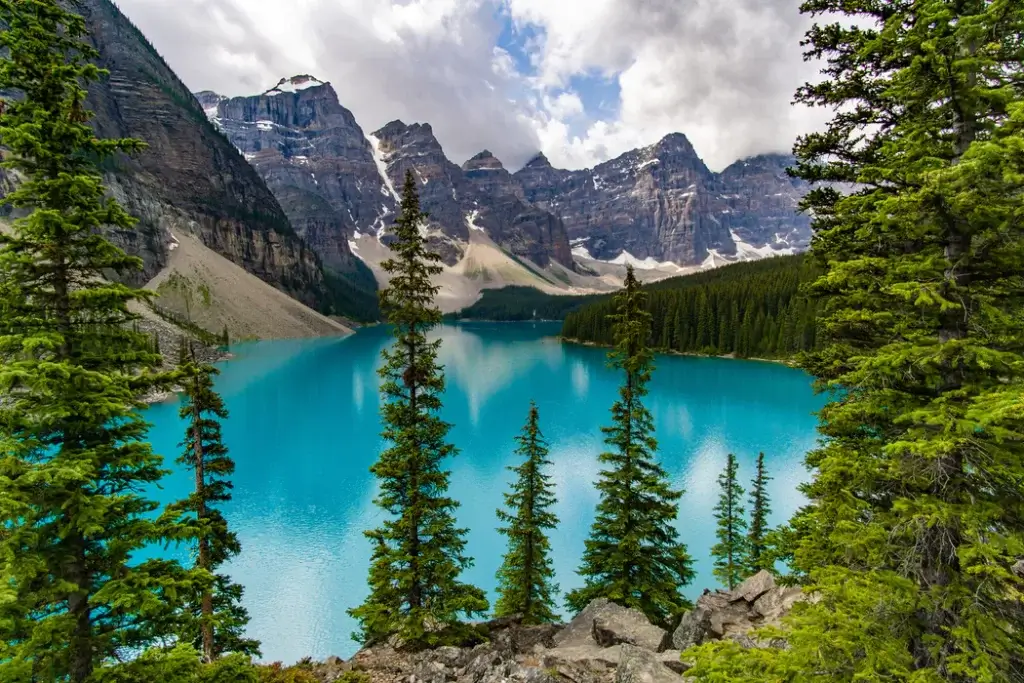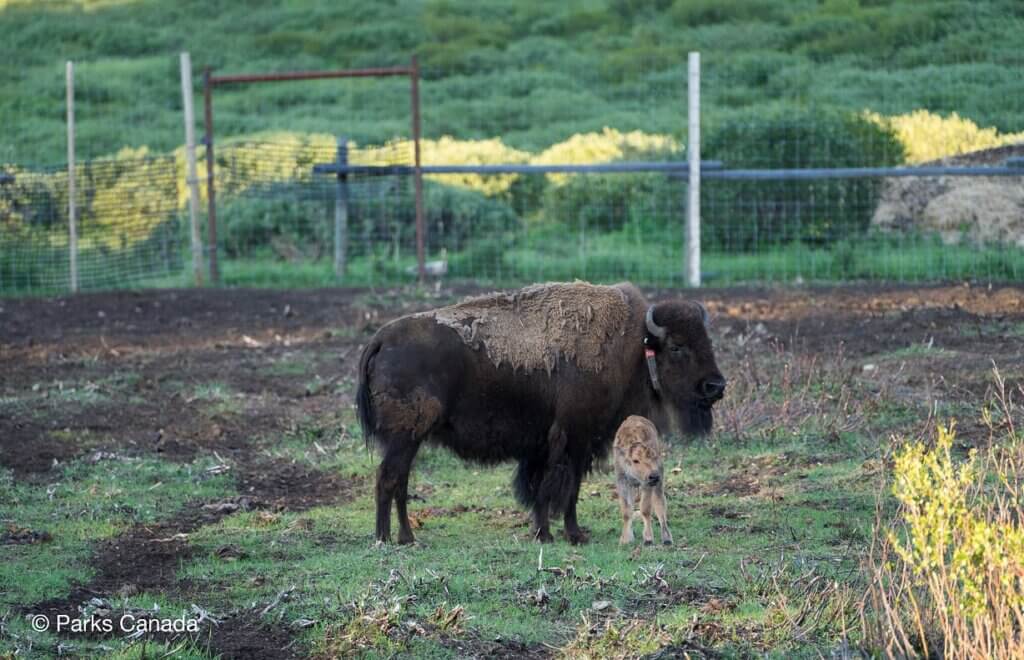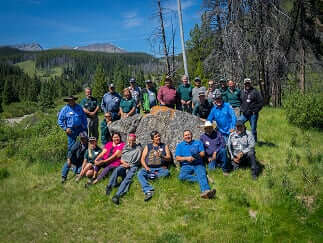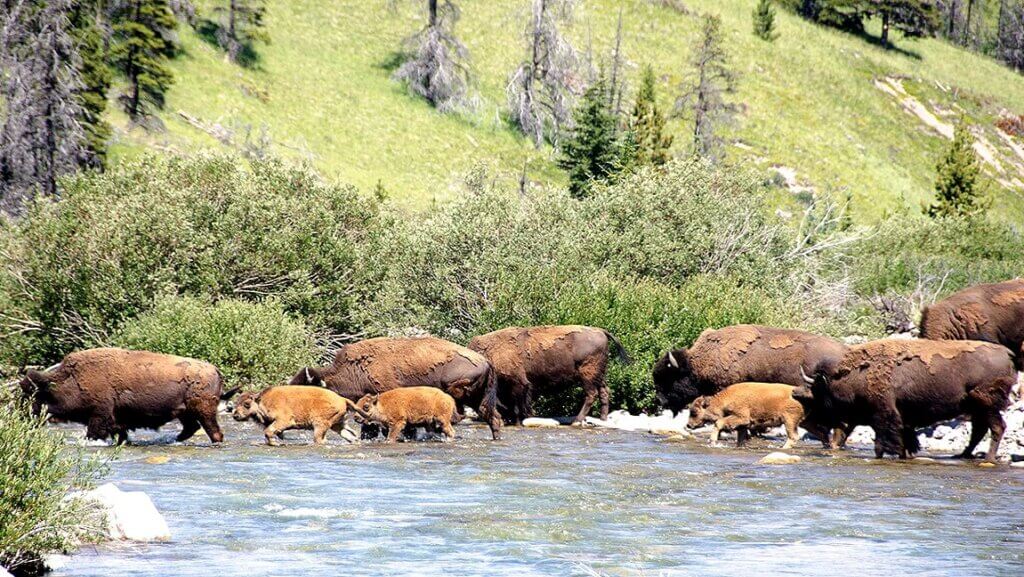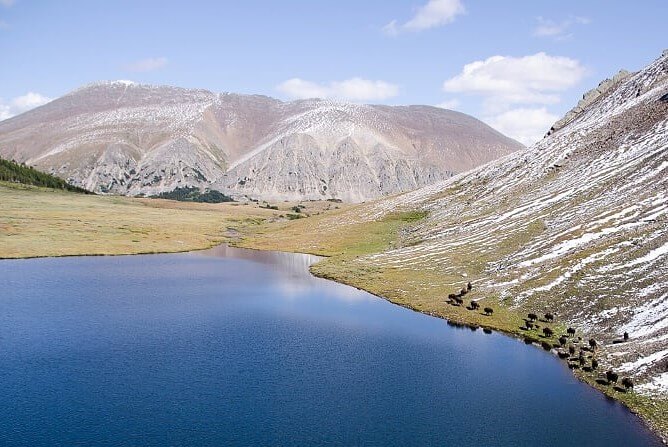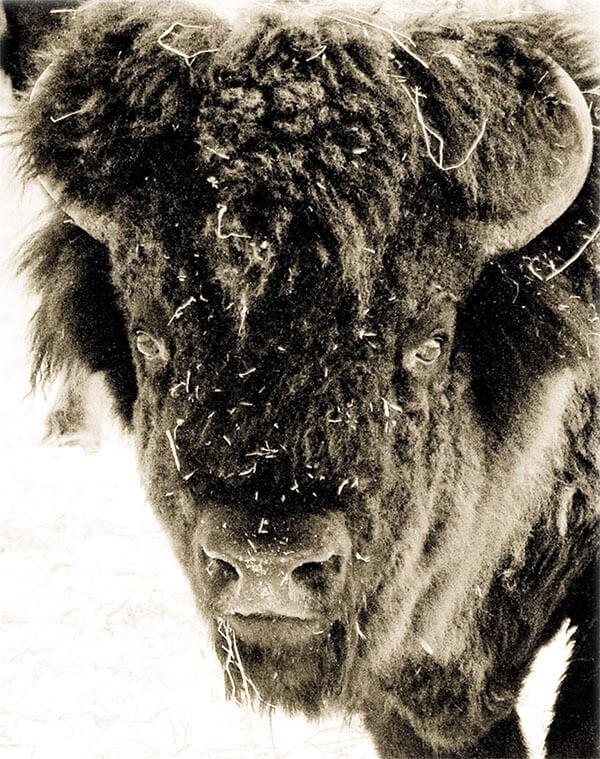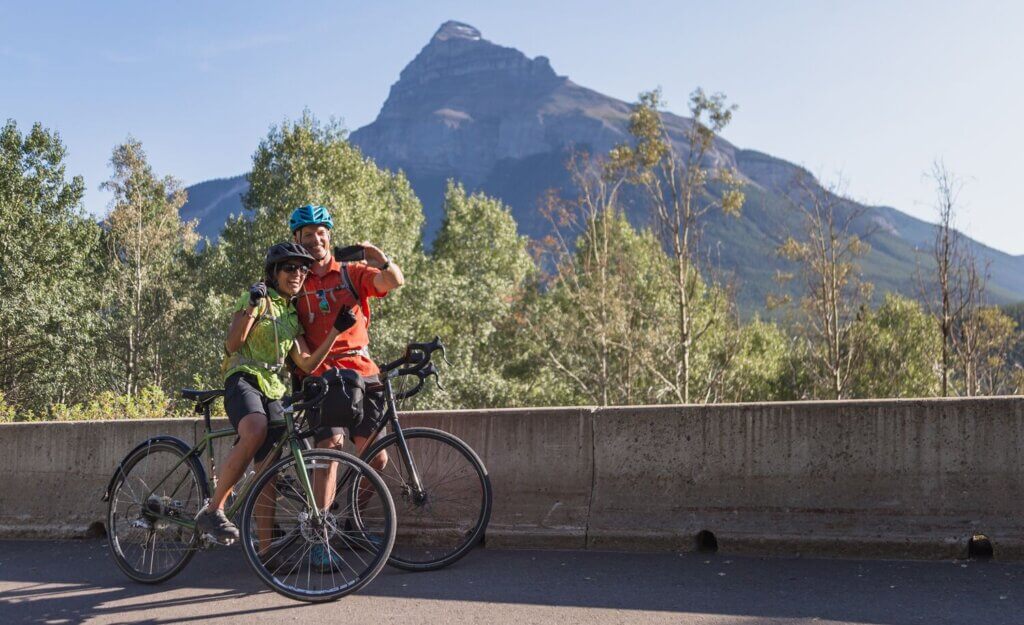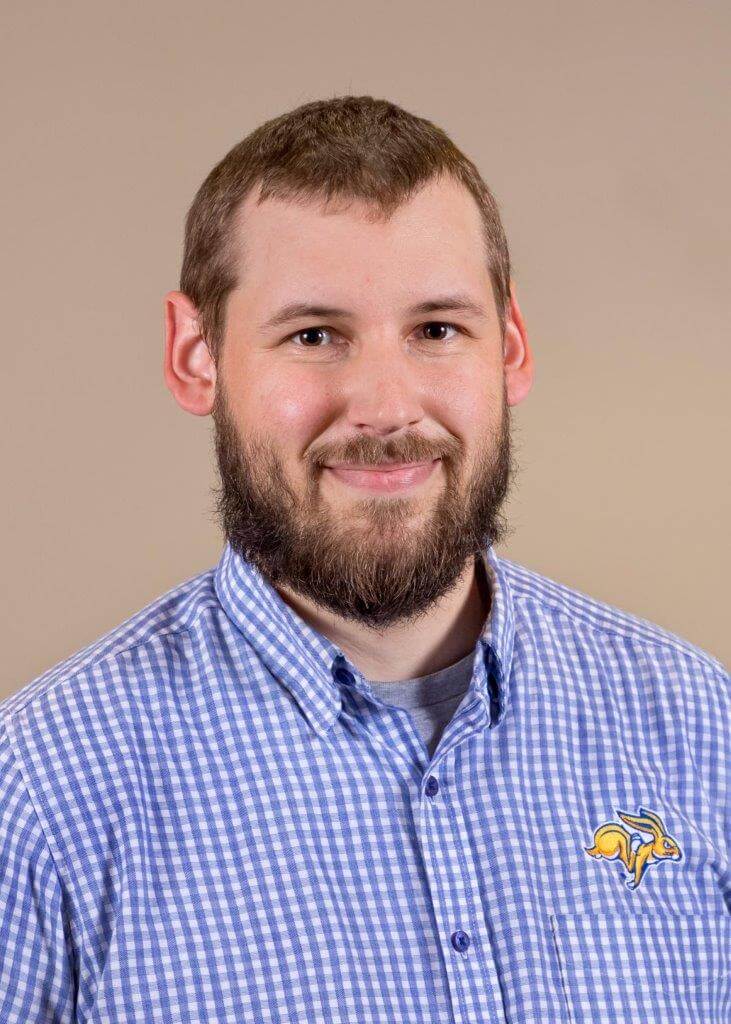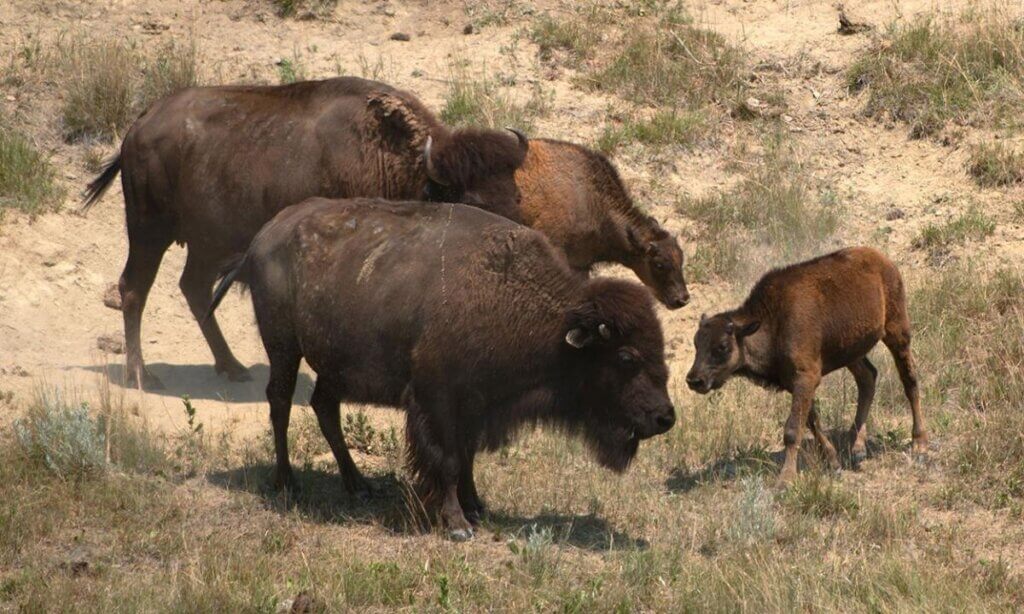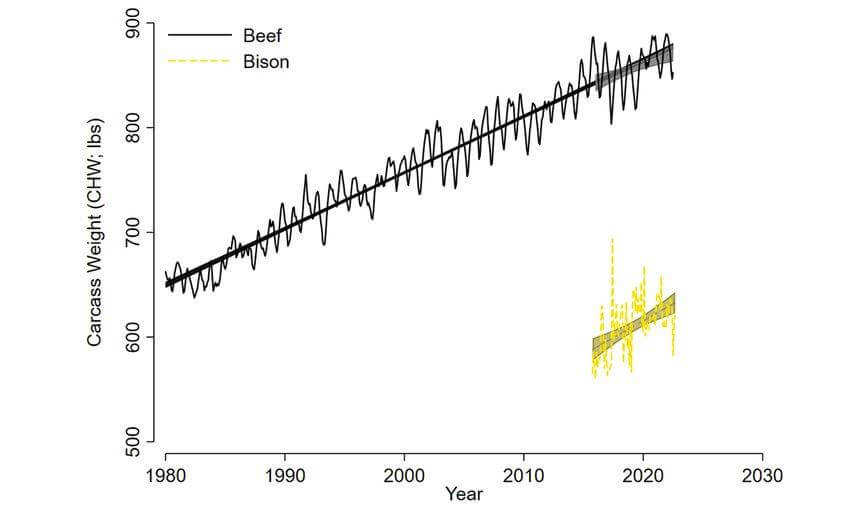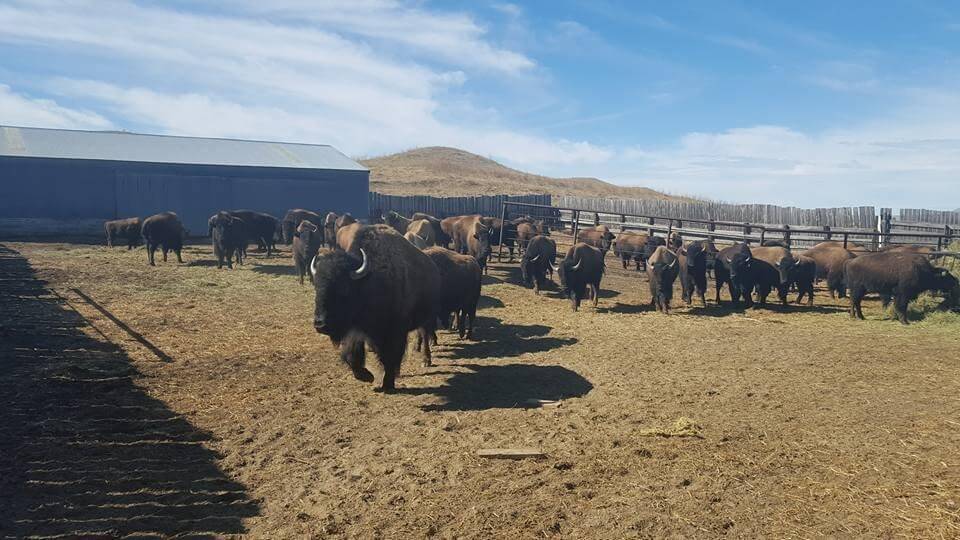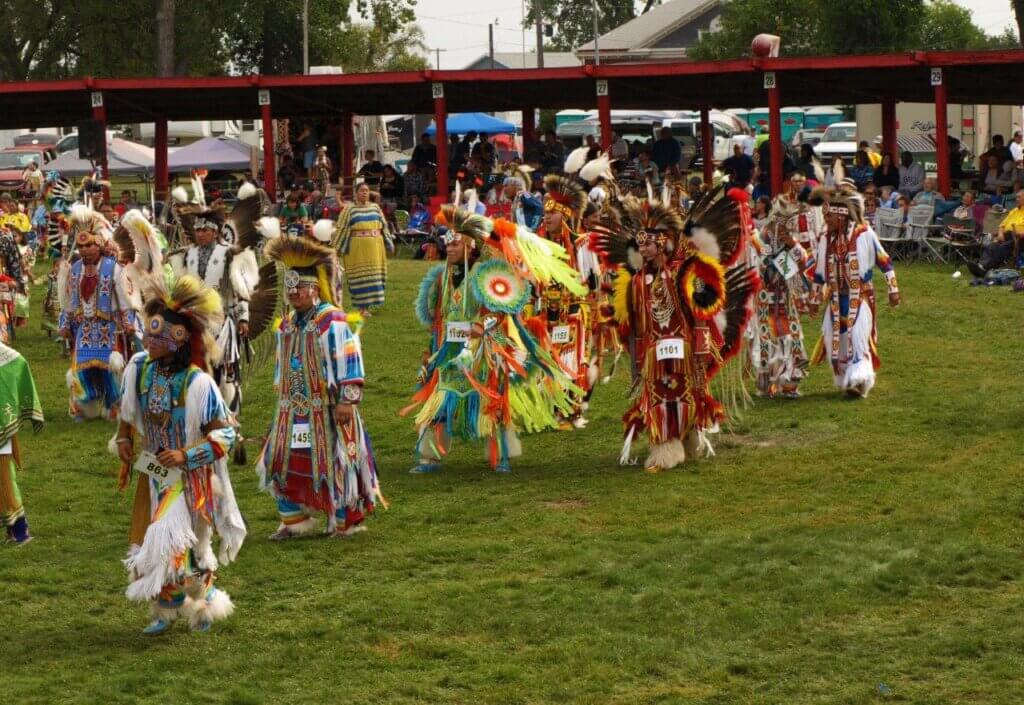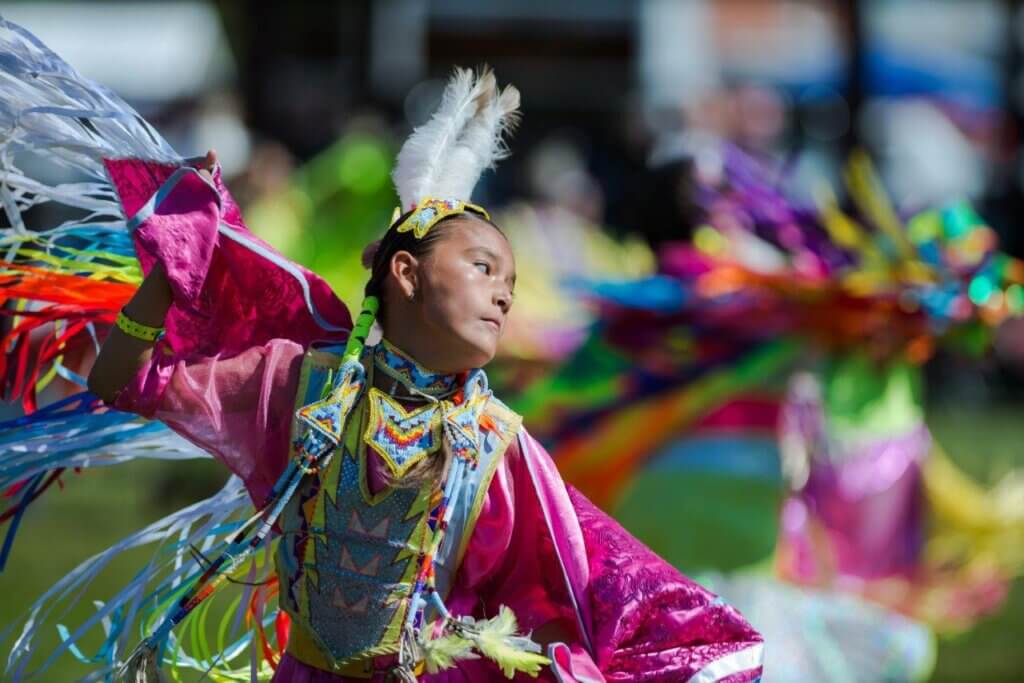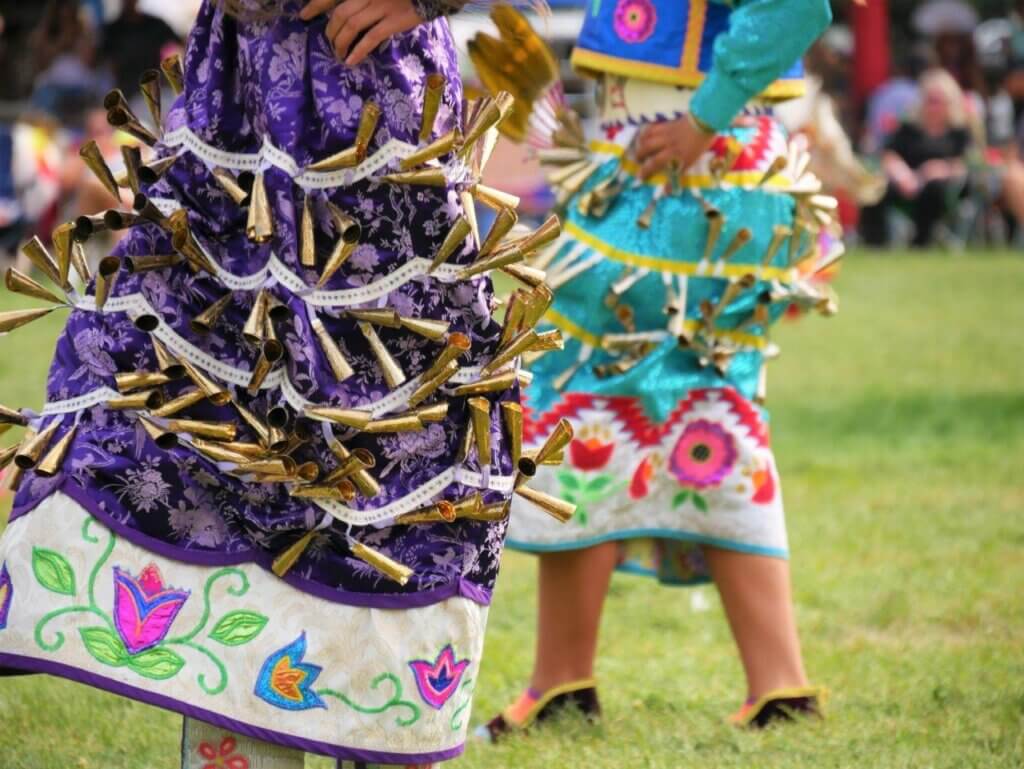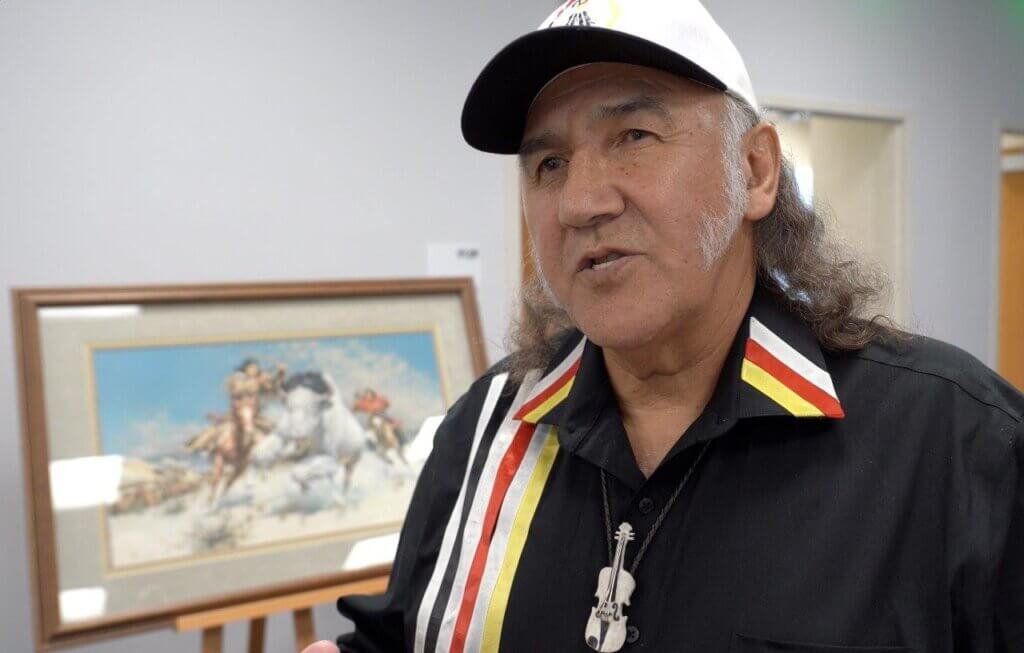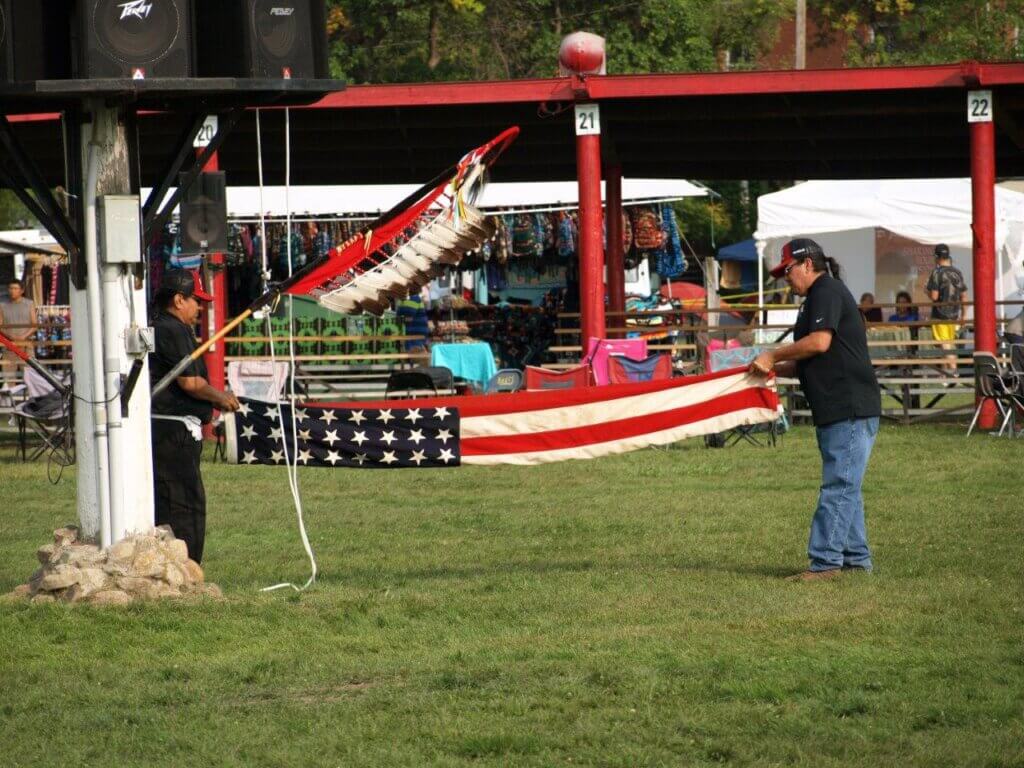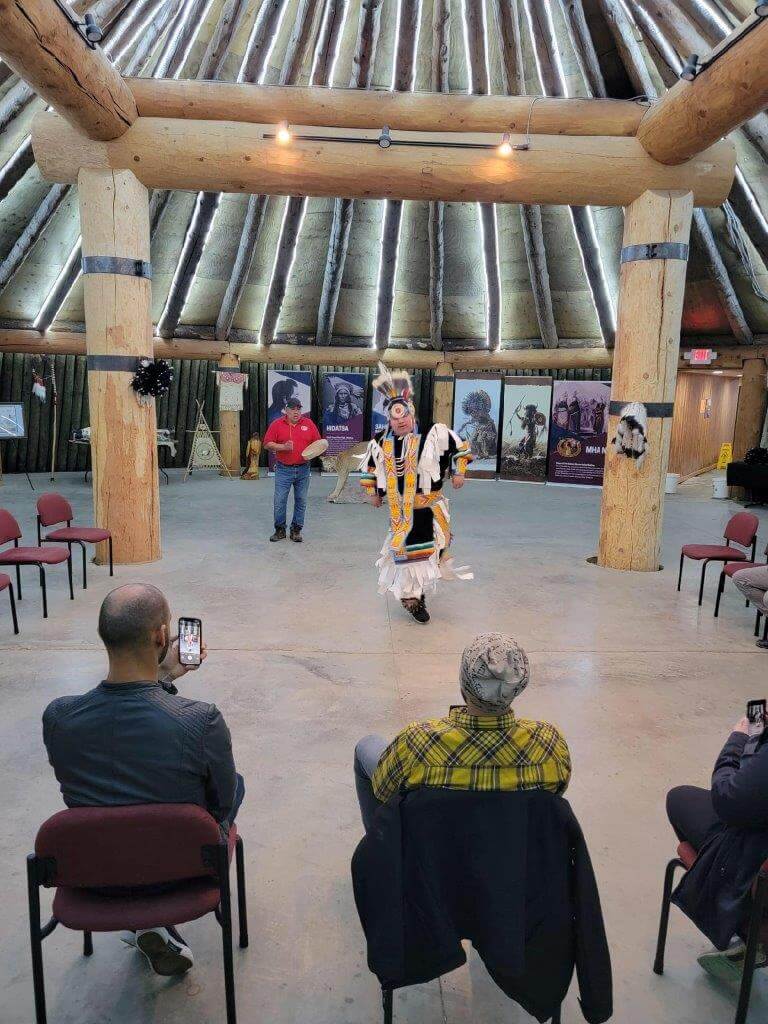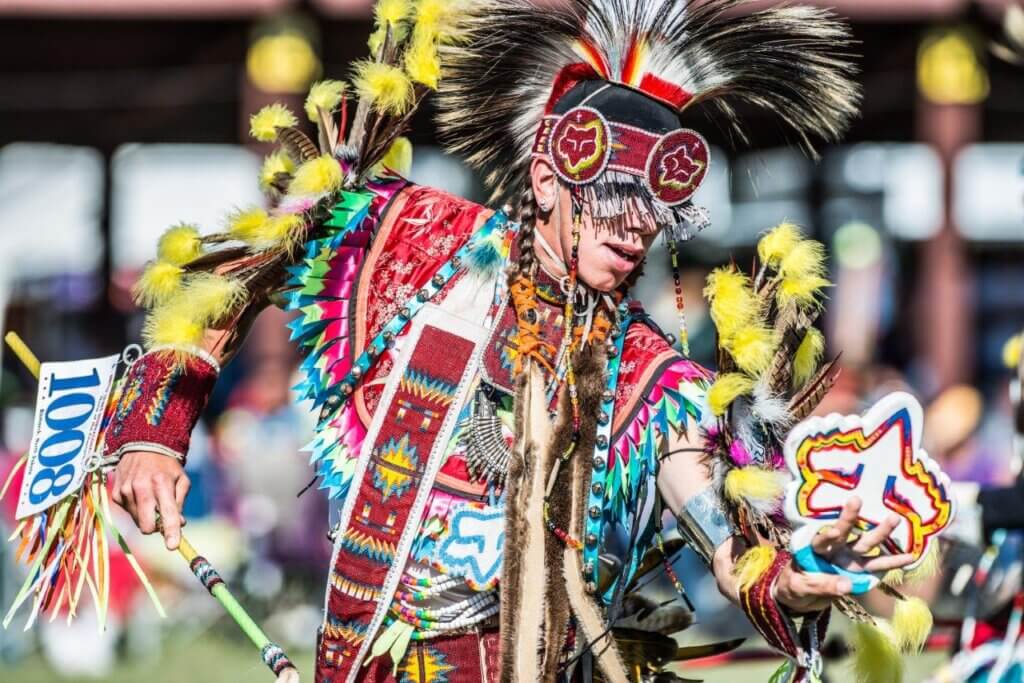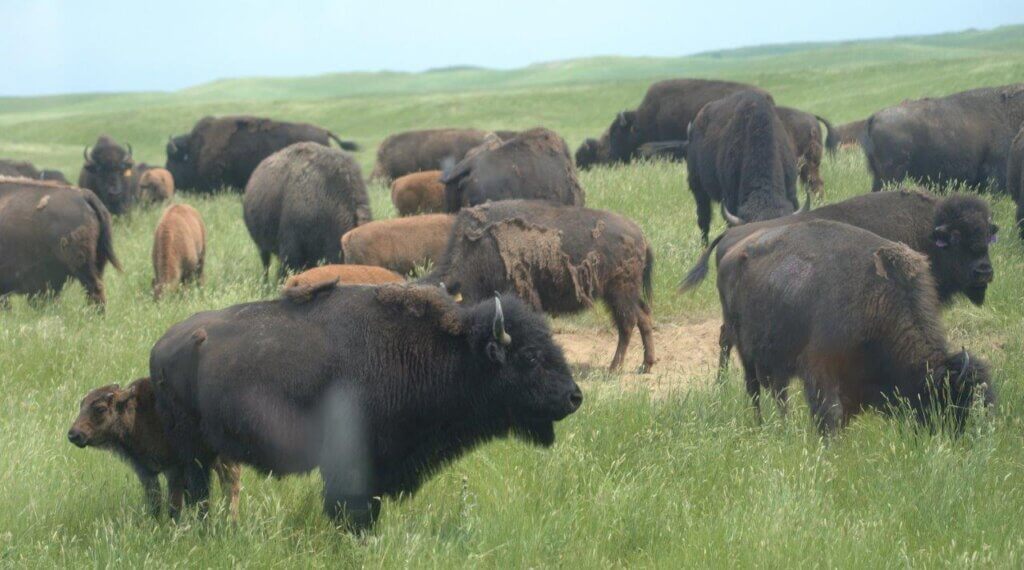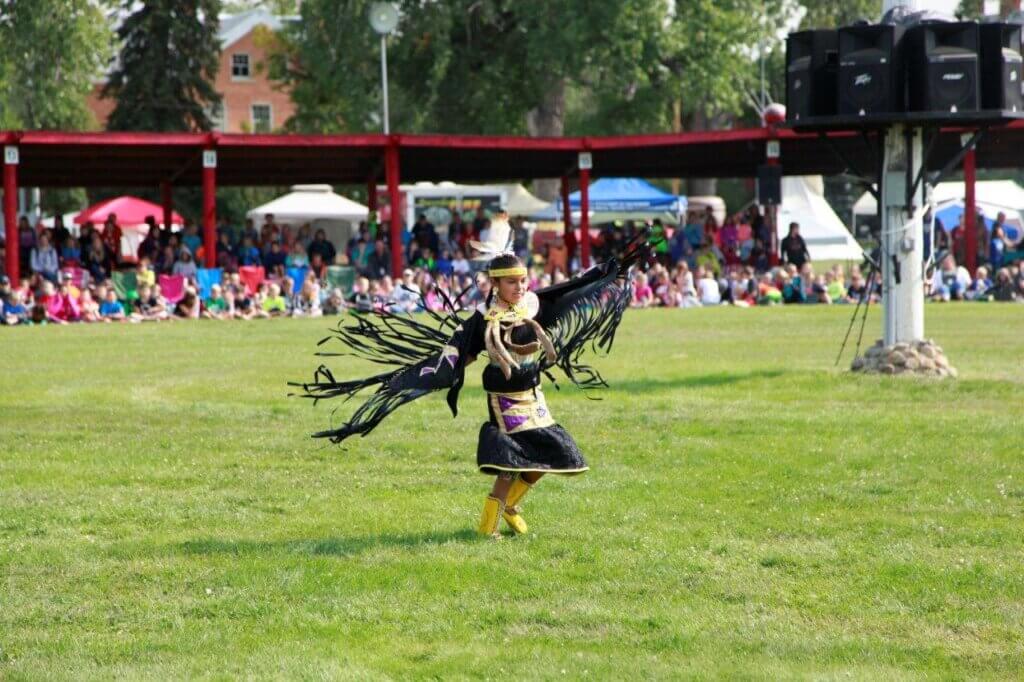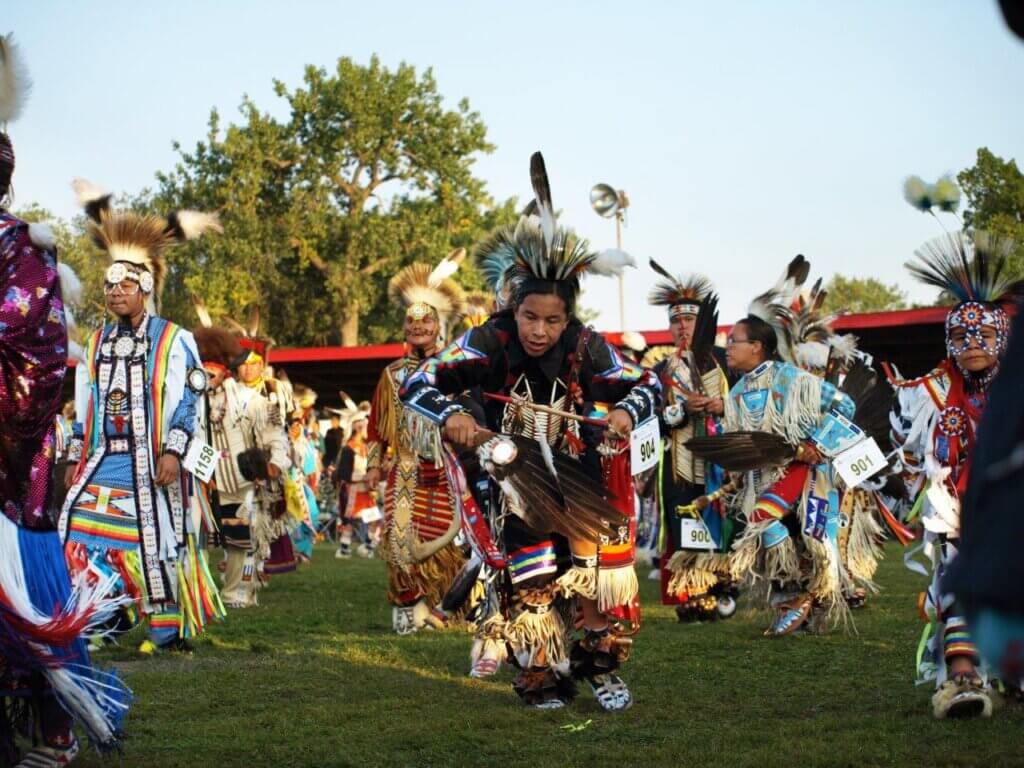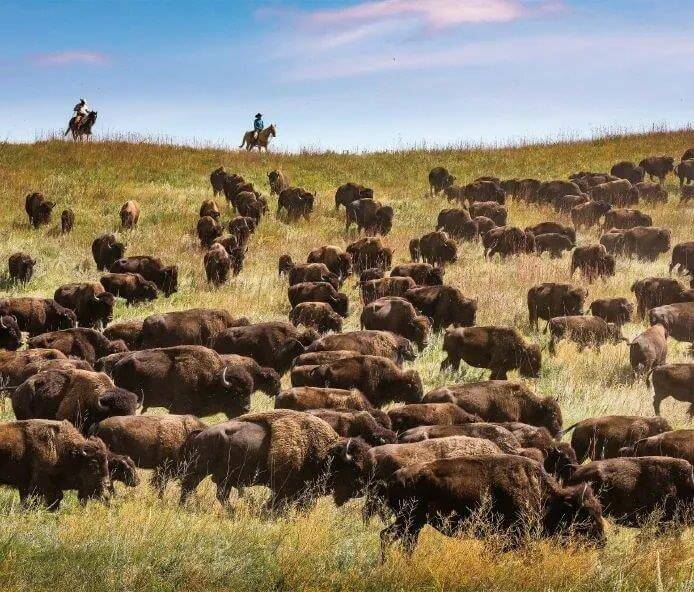
Banff Bison: Free and Thriving (Part 2)

At Banff National Park the scenery is spectacular! Rugged mountains rise on every side. Photo courtesy Parks Canada.
At Banff National Park above the tree line the landscape is mostly rocks and ice.
In 2017, a small herd of young Plains buffalo was introduced to this mountainous landscape—but in very deliberate steps.
The 16 adult buffalo—10 two-year old pregnant heifers and 6 young bulls—stayed in the fenced enclosure in the Panther Valley for 2 calving cycles. In 1 year their numbers increased to 26; in 1.5 years to 36.
First they lived for nearly 2 years in a small re-introduction pasture in the Panther Valley. The purpose being for the young buffalo mothers to bond for both years to the place they birth their calves. Twenty calves were born there.
Now after 5 years, the wild herd of Plains buffalo—having lived only in the plains up to this point—climbs to the highest peaks and lives high up in the mountains each summer.

Rangers tell us it is a magnificent sight to watch the buffalo walking single file along a high trail on the shore of an alpine lake. Photo courtesy Parks Canada.
Unlike other western mountain towns that focused on mining or agriculture, Banff was built as a tourist destination from the beginning.
Three to four million visitors come to the Banff area every year.
Planning the “Homecoming to Banff”
The dream of buffalo planners has always been to have free-ranging buffalo in the backcountry of Banff National Park. Wild buffalo, as they had been in prehistoric days when they were hunted by indigenous people.
The historic “Homecoming to Banff” was planned as a high-tech, scientific experiment producing a wealth of detailed research data.
It took years of consultation and detailed planning before the Forest Rangers were ready.
First Nations people and conservationists campaigned through all those years to return bison to Banff. But it took 20 years after the display buffalo herd for tourists was gone from the small pasture by the Banff railroad before it actually happened.
Finally the 5-year restoration plan was ready to go.
A small relocation pasture was prepared in the remote Panther Valley.
The Park Rangers knew they wanted to get all concerned groups involved from the beginning:
The potential visitors—Canadians at large—bison ranchers, environmental, industry, recreation and research organizations, and Indigenous Peoples—many of whom had been previously involved in earlier phases.
At every turn they asked for feedback. One of the first questions they asked was: “How do you get Plains buffalo to bond to a Rocky Mountain home?”
Seasoned buffalo handlers agreed: Buffalo cows from the plains need to calve in the remote mountains—maybe twice—before they will accept it as home.
“Otherwise any self-respecting buffalo herd will travel until they reach a place they like—breaking down fences and trampling crops as needed to get there,” they said.
Cattle ranchers voiced concerns that buffalo would escape, damage property and spread disease to livestock. In response, the planners included a hazing zone, recapturing and as a last resort relocating or destroying buffalo that escaped.
Airlifted into Panther Valley
Prayers were spoken and songs sung at Elk Island National Park—the original home of Banff’s 16 bison. Treaty 6 and 7 Nations and the Métis Nation of Alberta helped give bison a proper blessing before the herd began their journey to the mountains.
The bison were loaded into special containers, and they drove through the night as a convoy to the Ya Ha Tinda Ranch, on the edge of Banff National Park.
Early the next morning, a helicopter lifted each container and flew them over the horizon to their new home in Banff National Park.
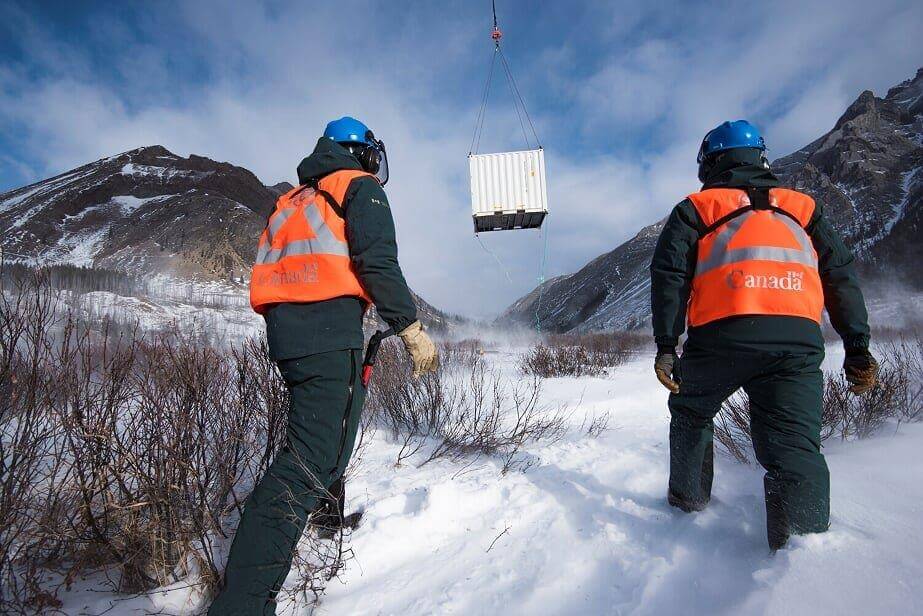
The containers land in the necessary spot, eased down from the heliocopter into the Panther Valley enclosure. One by one, the released buffalo bolted from the containers and began to explore their new home. Parks Canada.
Since the herd is remote, sharing the bison story with Canadians has been a big part of this project.
“We hosted a series of community events, interpretive programs and virtual experiences (such as this blog!) to help give Canadians and visitors from around the world a chance to connect with this historic reintroduction,” according to press releases. “Stay tuned for on-going ways to connect with the herd!”
By June 7, 2017 all 10 heifers had calved.
“Happy birthday, bison! Ten bison calves born in Banff’s backcountry Banff just got a whole lot cuter,” said Karsten Heuer, Bison Reintroduction Project Manager for Banff National Park.
Heuer is leading the effort on the ground to return wild bison to Banff. Ten healthy bison calves were born in Banff National Park’s remote backcountry between Earth Day (April 22) and throughout May 2017, bringing the herd number to 26.
These new arrivals represent the future of bison restoration in Banff and are part of the larger vision to reintroduce wild bison to the park,” he said.
“The new calves are healthy and doing well. They are mingling with the herd, napping in the sun and playing.
“For the next few months, the calves will stay close to their mothers as they explore their new world. Their arrival is key part of the project as it will help the herd anchor to the landscape and adopt it as their new home.”
Canadians and people throughout the world, both adults and children, were urged to follow the Banff buffalo herd online and to participate in related activities.
To learn about the ecological and cultural importance of this iconic animal that once held such importance for native people and early settlers in the area.
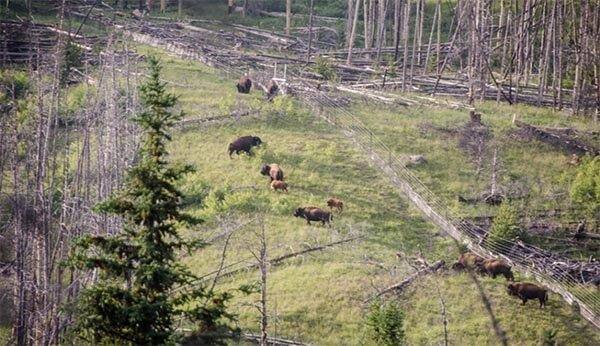
Barrier fences held the herd in a small relocation pasture for calving. Parks Canada.
“These new arrivals represent the future of bison restoration in Banff and are part of the larger vision to reintroduce wild bison to the park,” he said.
“The new calves are healthy and doing well. They are mingling with the herd, napping in the sun and playing.
“For the next few months, the calves will stay close to their mothers as they explore their new world. Their arrival is key part of the project as it will help the herd anchor to the landscape and adopt it as their new home.”
Canadians and people throughout the world, both adults and children, were urged to follow the Banff buffalo herd online and to participate in related activities.
To learn about the ecological and cultural importance of this iconic animal that once held such importance for native people and early settlers in the area.

The Banff museum staff is invested in helping Native people renew their cultural and historic connections with the buffalo that their ancestors once hunted here. Courtesy ©Parks Canada / Banff National Park.
“Follow the herd from home! See what life is like for the calves by watching our new webisode on YouTube. Share it with your friends and family on social media.”
These are wild buffalo and the goal is to keep them wild.
In preparation, the modern National Park Staff emphasize the ecological and conservation benefits that bison can bring to change the landscape and enrich plants and animals.
They are committed to increasing opportunities for Canadians and indeed, visitors from throughout the world.
People found they could connect with what was going on by following the Bison Blog, Twitter and Facebook accounts, a YouTube web series and attending fun interpretive programs in the Banff townsite and day-use areas. Live or online.
The 16 adult buffalo—10 two-year old pregnant heifers and 6 young bulls—stayed in the fenced enclosure in the Panther Valley for 2 calving cycles. In 2 years their numbers increased to 26, and then 36.
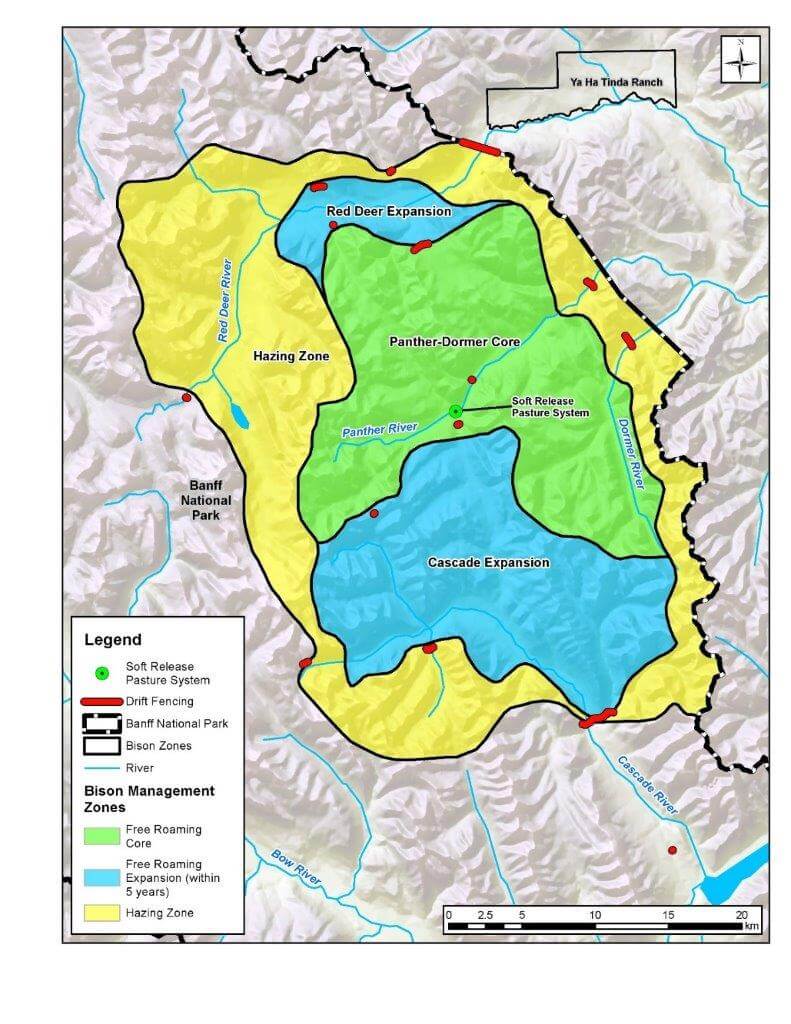
Green area shows the Free Roaming Core and includes the green dot on Panther River where the Soft Release Pasture System is located. The two blue areas—Red Deer and Cascade Expansions—are Free Roaming areas planned for use within 5 years. Yellow highlights the Hazing Zone expected to send wandering bison back into the desired areas. Red dots and bars show Drift Fencing, also designed to turn them back from wandering out of the park. Map Parks Canada.
Re-introduction into the Park
Bison are often considered to be a plains species, but they had called the highest mountain valleys their home for millennia. Bison were hunted from the Banff area in the early 1800s by indigenous people.
Banff School Students Welcome Bison
“We asked the students why they thought bringing back bison was important. We heard:
- ‘Because the land needs them’
- ‘Because they were here for a long time’
- ‘Because they are important for spirituality’
“Then the students rolled up their sleeves, mixed up some paint and coloured their own little bison with help from the Honourable Catherine McKenna, Minister of Environment and Climate Change.
“This cool art project was a story in collaboration: students at the neighbouring Canmore Collegiate High School used a laser-cutter to make adorable bison wood cut-outs.
“Once the paint dried, we picked 16 bison to represent the original herd from Elk Island National Park that started the Banff reintroduction. The rest of the ‘herd’ will decorate the fence of the new Banff Elementary School.
“This summer, we brought those 16 finished shapes to the soft-release pasture in the Panther Valley, home of the Banff bison herd, to decorate the fence!
“Thanks to all of the new ‘Bison Ambassadors’ at Banff Elementary School for helping our Banff Bison feel welcomed!”
Aug 30, 2017: Summer Vacation for Bison
“Our bison have taken a small but important step to become a wild herd in Banff National Park,” wrote Karsten Heuer in August 30, 2017.
“In July, we moved them from their 6-hectare winter pasture into a 12-hectare summer pasture that includes tasty mountain grass (instead of dry hay), a clear river to drink from (instead of a trough), and hills to climb and explore.
It’s a pretty big change for these animals,” noted Heuer. “There is no moving water or steep hills in Elk Island National Park where they came from or in the winter pasture where they’ve lived for the past 5 months. We got see the herd cross a river for the first time in their lives!”
“The herd will be on ‘summer vacation’ until the fall, when they will return to their winter pasture for the season.”
Dec 22, 2017: Banff, bison and … horses
Report from the Park crew:
“Imagine the old days of Banff National Park. Wardens travelled the rugged backcountry— crossing mountain passes and fording glacial rivers . . . all on the back of a horse.
“Much has changed in a hundred years, but at least one thing holds true: horses are still the best way for Parks Canada staff to travel in the mountains.
“Horses are also helping bring bison back to Banff. We have a Parks Canada bison steward watching over the herd 24 hours a day on week-long shifts in the backcountry.
“The bison are in one of the most remote parts of Banff, so we use horses as our main mode of transportation in and out of the field.
“To get there, we pack up the horses and ride for two full days into the heart of the bison reintroduction zone. Along the way, we get a glimpse of Banff at its wildest: wolves howling, wolverine tracks and sheep looking down from ridges above.
“Why bring back the bison? Park officials agree it’s an opportunity for redemption of past mistakes, and it offers hope for the future.
“Bison are an ecological and cultural keystone species and humble landscape engineers. Their wallows form ephemeral pools that create habitat for toads, wetland plant species and birdlife.
“As herbivores, their grazing activities lead to increased nutrient levels in the soil, assisting with seed dispersal and building plant diversity.
“The birds are also excited for their return. Ravens and magpies are now enjoying more luxurious nests and have been spotted boldly pulling shedding hair from bison flanks. Cowbirds are gleefully riding on the backs of the bison and following behind, feasting on insects kicked up by heavy hooves.
“While the remote location of the bison was meticulously chosen to allow the herd space to flourish beyond the reach of camera-toting tourists, as a backcountry enthusiast, it does excite me to know that this giant herbivore is re-establishing its rightful place back on its traditional landscape.
“As the population grows and continues to thrive, I hope the sound of the thunder returns.
“Perhaps one day, as I climb up to a mountain pass, my efforts will be rewarded with a glimpse of this noble animal on the horizon and we will feel that heartbeat on the landscape once again. Give me a home where the buffalo roam!”
”On July 29, 2018, we released 31 bison from the soft-release pasture in Panther Valley, and they are now free to roam in a 1200 sq km reintroduction zone.
“They will start to fulfill their role in the ecosystem as ‘keystone species’ by creating a vibrant mosaic of habitats that benefits bugs to birds to bears and hundreds of other species.
“Bison are an icon of Canada’s history. They were an integral part of the lives of Indigenous Peoples, and they still have an important role in the culture of Indigenous Peoples. Restoring bison to the landscape is an opportunity to renew cultural and historical connections.”
After Calving in Aug 2018
“These are not a captive display herd. These are wild bison,” said Bill Hunt, resource conservation manager with Parks Canada.
“This is virtually unprecedented. If we look at the largest land mammal in North America, it’s been gone from Banff National Park for over 140 years, and just the role that bison play in the ecosystem, makes this even more significant than perhaps many other species that we work on in the park.
“They will have a huge impact eventually on how wolves interact with their prey. It’s going to affect songbirds, amphibians. We have a whole suite of monitoring in place to try and track and record those changes over time.
“The next five years, we’re studying everything from effects on streams and fish, bug communities that forage in the bison dung, songbird communities—all this monitoring is in place,” added Hunt.
Surveillance of the Herd
“Our network of remote cameras captures the secret life of the herd. We set them up along trails we know the animals use. When an animal passes by, it triggers a sensor and captures a photo or video.
“Images from remote cameras reveal information that would be difficult to observe in person, such as detailed health observations.
“We rely on GPS radio collars as our most essential tool to monitor herd movements. Before we released the herd into the wild, we collared all the adults. Remote cameras capture some special moments that would otherwise go unseen.
“The collars beam location information via satellites to a web platform that our team can access from the office.
“The collar data tells us about how the animals adapt to their new home and the type of habitat they prefer. We closely observe which animals travel together, and for the most part, they have all been travelling as a large group with some side adventures along the way.
“For the next three years of the pilot project, the bison will be closely monitored by Parks Canada as they explore their new home in the backcountry.”
The public is encouraged to get involved in monitoring the small herd.
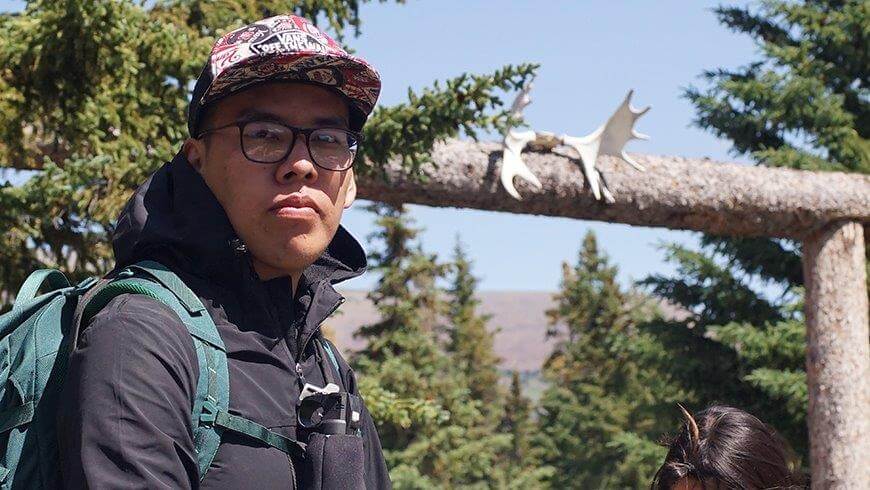
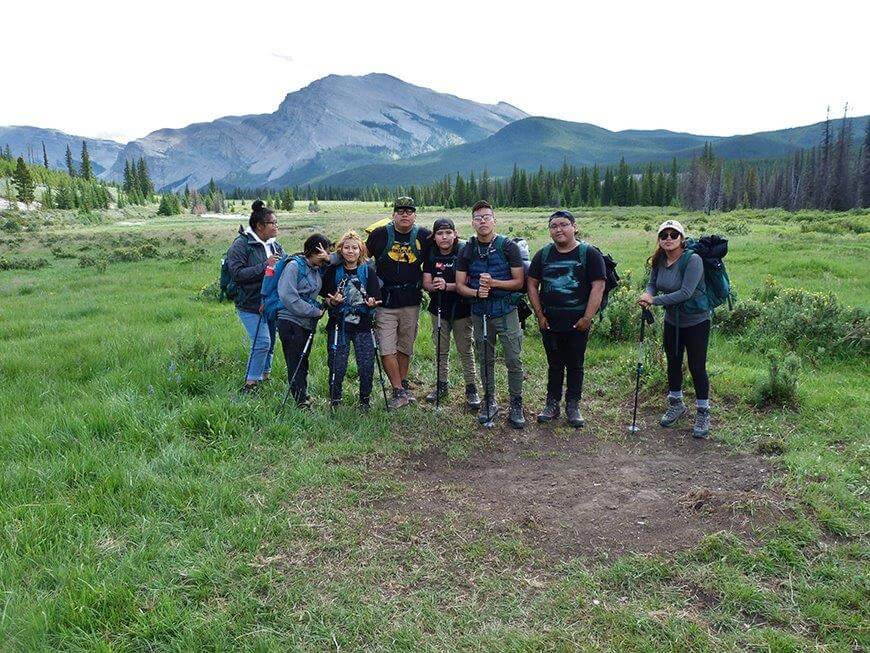
The Park Rangers have involved Indigenous people at every step along the way. They are especially interested in working with youth. At left, Javin TwoYoungman, and right, a group of young filmmakers hike through the Red Deer Valley where the wild buffalo are grazing. Parks Canada.
Nov 2, 2019—Walking With Bison
Indigenous peoples have a historical and cultural relationship with bison that spans thousands of years. The reintroduction of bison to Banff National Park fosters reconnection of this important relationship, inspires discovery, and provides stewardship and learning opportunities.
In summer 2019, Parks Canada led a group of youth filmmakers from Treaty 7 though the remote Red Deer Valley where bison roam once again. In partnership with the Banff Centre, these filmmakers from the Nakoda A/V Club and the Napi Collective created short films inspired by their experience.
This guest blog, written by Amber Twoyoungmen of the Nakoda A/V Club discusses the significance of the return of bison to Treaty 7 Territory.
“The Nakoda A/V Club is a group of young emerging Indigenous artists from the Bow Valley making films and animations about narratives that matter to us. We work together to help each other to get through tough times and to create opportunities for each other to express our stories.
“In the fall of 2018 we learned about the Bison being reintroduced in Banff National Park. We saw the films that Parks Canada made about the project, and we thought about what we could add to the story.
“Bison matter to Nakoda because they were always part of this place. They belong here. Their presence is part of the Bow Valley, just as the presence of people is.
“At one time, Banff was understood by my people as a place of gathering, of trade, and of healing.
“Today its meaning is different, but I’m excited, because it seems like people nowadays are thinking carefully about all the beings in this Valley and how they relate to each other.
“We asked Parks Canada if we could help tell the story of the return of bison, and we were so happy they agreed! We invited out our neighbors, the Napi Collective from the Siksika Nation to tell stories too, because they belong here also.
“We gathered at Banff Centre to think about the stories we wanted to tell, and to learn about Bison. Some of our members, got to go to the Red Deer Valley, where the Bison live! When they came back, they told us about what it was like, and they’ll tell you too:”
Comments of Participants
Javan Twoyoungmen: “Being invited out to the backcountry of the Rocky Mountains was an incredible experience . . . The Rockies hold a precious history with the Nakoda people, walking the path my ancestors once took was a memorable experience one that I will never forget.”
Iris Clarke: “I can honestly say it was the hardest thing I’ve ever done in my life. I didn’t think I could hike that far. But it was the most rewarding too.”
Tashina Ear: “My experience hiking with the Parks Canada crew was very exciting but most of all, a great opportunity to learn with Parks Canada.
“Those very paths were also the same trails our Nakoda ancestors had walked through and I’ve never realized how hard they worked, and how long their days must have been. Our ancestors were so strong, and I want to be like them.
“I’ve been on simple little two-hour hikes but nothing compared to this! I’m greatly appreciative that I was given this opportunity to hike with Nakoda A/V Club members and the staff from Parks Canada.
“After the hike, we made a movie. We used everything we learned, and everything we thought about to help tell the story we wanted to tell.
“As part of making that movie, we camped together, we hiked, we swam and we went back to Banff to edit our work with the support of Banff Centre. Then we will be able to present what we made and what we learned as part of the Banff Mountain Film Festival.
“The project was such a great opportunity. Bison matter not just to us but also to lots of beings in the mountains. Parks Canada taught us about how Bison leave fur for nests, make indents for pools of water to grow and help to create conditions for grasses to thrive.
“At one time, I might have learned this by watching the Bison here in the Bow Valley, and I’m sad that’s not the case anymore, but I’m so excited that some of our members did get to learn this way by hiking in the Red Deer Valley!
“That’s a connection to who we used to be, and who we might be again someday. In the future, our story will include all the new people in the Valley too, just as this part of our story is so intertwined with Parks Canada.
“It’s an honor to work on something important. We loved working with Parks Canada to tell the story of the return of bison to Banff.
“Like all our stories, it’s not meant to have an end, it’s meant to be re-told and shared often, because in the sharing of stories we bring our gifts to the valley, just like the Bison leaves its fur for all the small birds.”
“Thank you to guest blog writer, Amber Twoyoungmen and to all of the participating filmmakers for sharing their stories with us.”
For Questions or more Information Contact:
Karsten Heuer
Banff Field Unit, Parks Canada
karsten.heuer@canada.ca

Francie M Berg
Author of the Buffalo Tales &Trails blog
